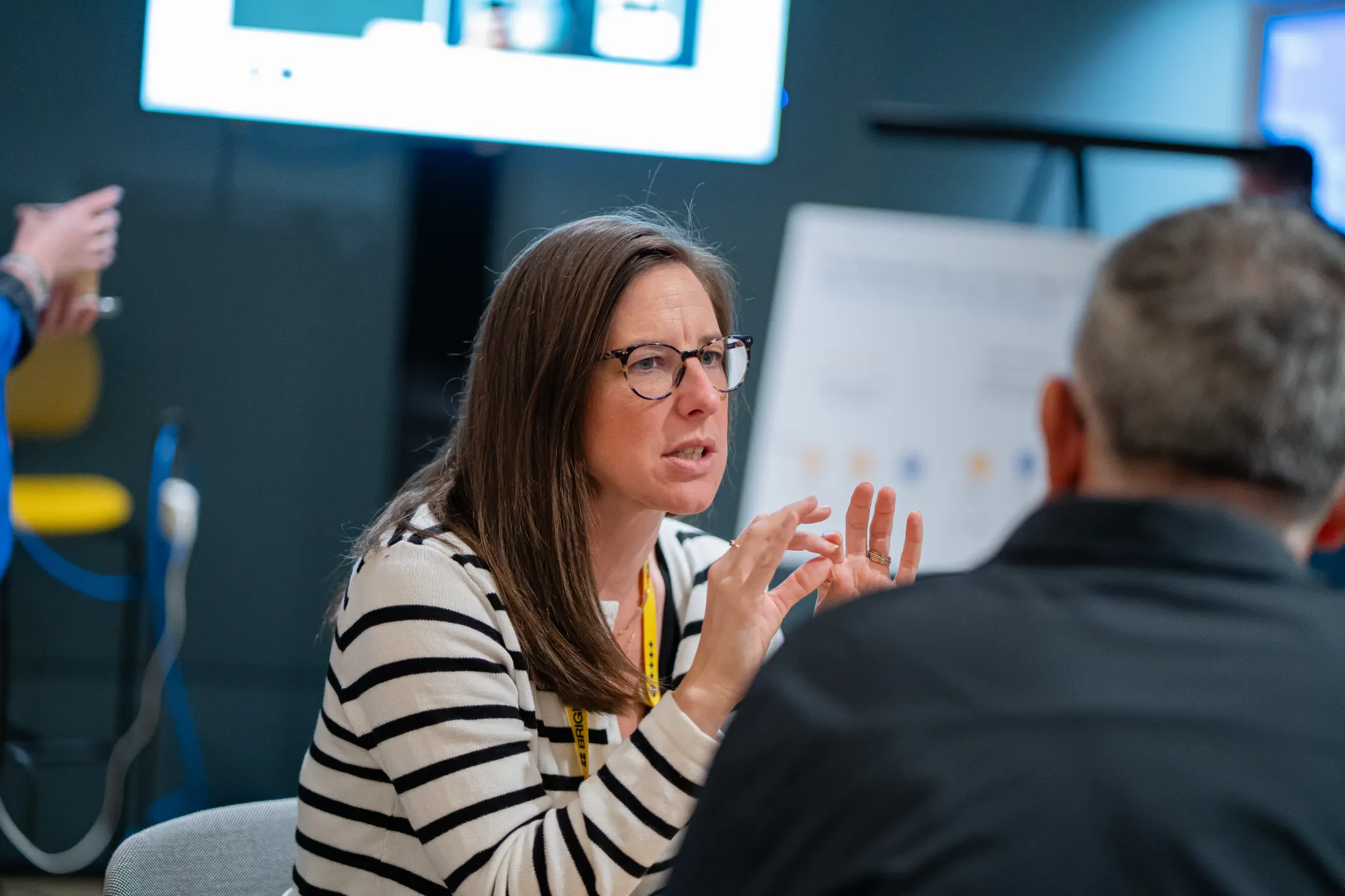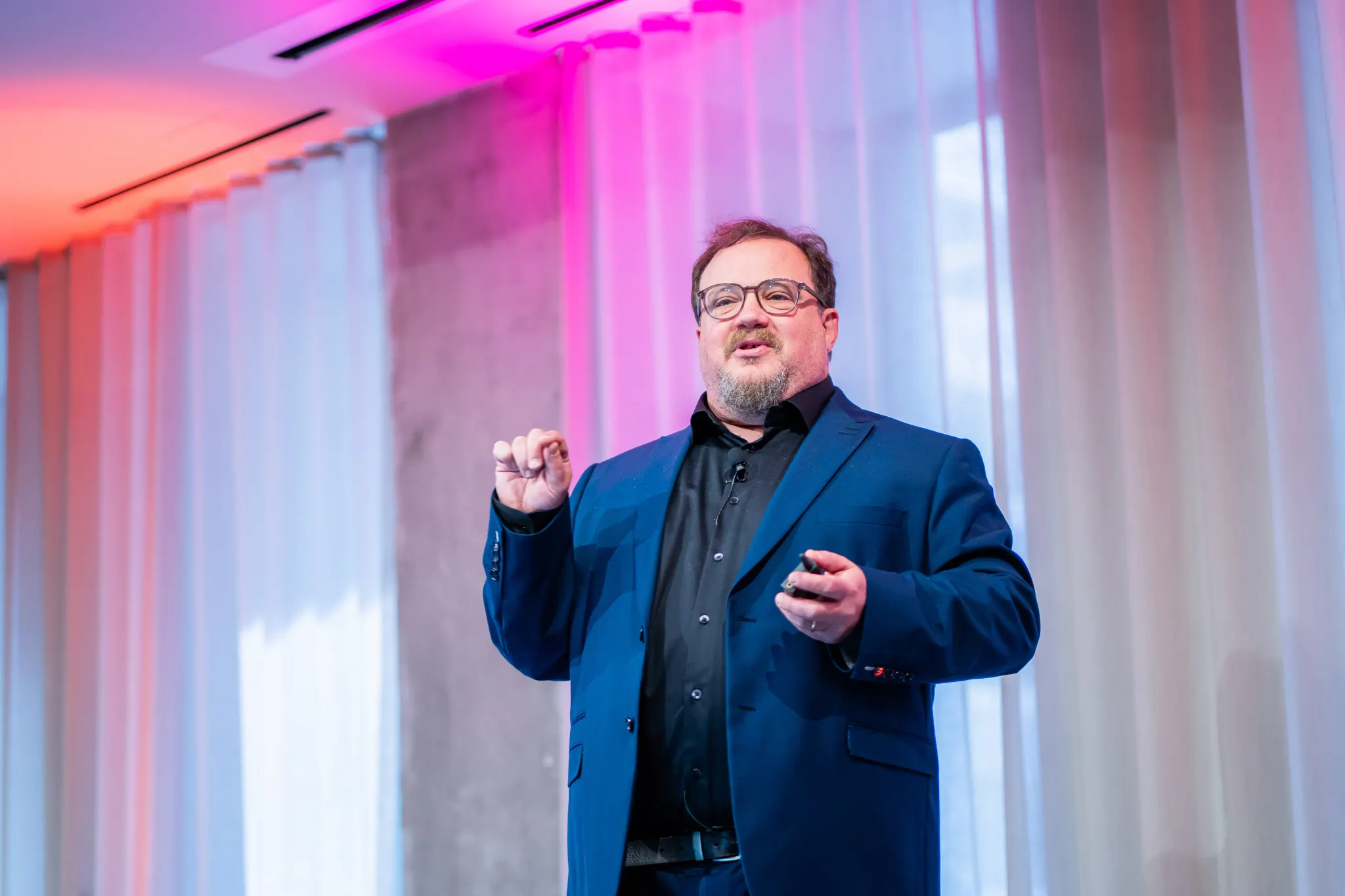How LumApps Customers are Using AI to Work Smarter


How LumApps Customers are Using AI to Work Smarter
Artificial intelligence is no longer a far-off concept; it's a practical tool changing how we work, collaborate, and innovate. But moving beyond the initial excitement to create real value is a challenge many organizations are still navigating. At Bright Conference, leaders from Google, Stellantis, and the Financial Times shared how they are turning AI’s potential into tangible results, offering a clear roadmap for others to follow.
The panel discussion, "Leveraging AI for Efficiency, Innovation, and Employee Engagement" included:
- Natasha Phee, Global Program Manager at Google
- Jennifer Kolf and Sarah Beel from Stellantis
- Megan Dold, Deputy Global Communications Director at the Financial Times
They explored the journey of AI adoption, from building comfort and excitement to fostering grassroots innovation and achieving enterprise-wide transformation. This article unpacks their insights, revealing how to use AI not just for productivity, but to create a more connected and human-centric workplace.
The Three Stages of the AI Journey
The conversation revealed a clear, three-stage path that most organizations follow when adopting AI in your modern intranet. Understanding where you are on this path can help you navigate the challenges and opportunities ahead.
Stage 1: Building Comfort and Excitement
Many companies are still in the early phase of AI adoption, where the primary goal is to build comfort and demystify the technology. The key is to start small and solve real, everyday problems.
Stellantis, the global automotive company behind brands like Jeep and Chrysler, began by integrating a generative AI summary feature directly into their LumApps intranet. "We know everybody's super busy and might not have time to read everything," explained Sarah Beel, the company’s intranet manager. The AI tool (inside LumApps intranet) automatically summarizes news stories into six core languages and includes a text-to-speech option. This simple addition made content more accessible and saved employees valuable time.

The Financial Times took a different approach, launching a company-wide initiative to make every employee "AI-confident." After recognizing that lack of time was the biggest barrier to adoption, they hosted a week-long training event and gave teams explicit permission from senior leaders to attend.
Megan Dold, Deputy Comms Director, shared how they used gamification to spark interest. "We did a mascot competition on LumApps... and had 200 entries. It was a fun way to get people excited."
Stage 2: Incubating Grassroots Innovation
Once employees are comfortable with AI, the next stage is incubation. This is where you empower teams to build their own solutions and share what works. Storytelling becomes a powerful tool for scaling these innovations.
At the Financial Times, peer-to-peer learning and celebrating individual wins have been highly effective. Dold shared the story of a young employee in advertising who built a GPT to detect greenwashing in client ads, saving the company hundreds of hours a month. "We did a case study for him, and now his personal profile has gotten such a great boost," she said. By highlighting these successes on the intranet, the company motivates others to experiment and share their own solutions.
Natasha Phee from Google emphasized the importance of creating a supportive ecosystem for these grassroots projects. While individual innovation is powerful, it needs technical support to scale securely and effectively. Phee’s team helps integrate employee-built tools into larger enterprise systems, ensuring they are compliant and supported.
This stage also uncovers unexpected benefits. At Stellantis, the AI-powered audio summaries became a huge hit with employees with accessibility needs. "It really provided a pleasant benefit that we didn't anticipate," said Jennifer Cole. "The employees that came forward to thank us... it was a really nice win for the company." This story highlights how AI can bring a powerful human element to the workplace, solving problems in ways we might not even expect.
Stage 3: Achieving Enterprise-Wide Transformation
The final stage is enterprise-wide transformation, where AI is deeply embedded in core processes. While no panelist claimed to have fully arrived here, they are seeing promising signs of change.
A crucial element of this stage is strong data governance. As Natasha Phee pointed out, your intranet is not just a channel for communication; it is a vital data source for AI models. "We have to be all that much more careful about maintaining the source," she explained. "At least for Google, LumApps is going to be the source for a lot of this knowledge that we're going to be using in other places."
This means platforms like LumApps play a critical role in ensuring AI tools are fed high-quality, trustworthy information. Features like Content Gardening, which uses AI to nudge content owners to update outdated articles, become essential for maintaining a clean and reliable knowledge base.
Stellantis is using AI to tackle the problem of "infobesity," or information overload. By implementing a heat map on their homepage, they can use AI to analyze user behavior and make data-driven decisions about what content to feature. "What can AI in this heat map tell me of what I should do on my homepage?" asked Beel. This data-driven approach helps democratize content, ensuring employees see what’s most relevant, not just what’s loudest.
Actionable Takeaways for Your Organization
The insights from the Bright Conference panel offer a clear path forward for any organization looking to harness AI's potential. Here are a few actionable takeaways to get you started:
- Start with Simple, Solvable Problems: Don't try to boil the ocean. Begin by using AI to address small but meaningful pain points. Use built-in features like LumApps' AI-powered summaries or content generation tools to build comfort and show immediate value.
- Champion Your Innovators: Identify and celebrate employees who are experimenting with AI. Use your intranet to share their stories and create a culture of peer-to-peer learning. This not only scales innovation but also boosts morale and engagement.
- Treat Your Intranet as a Data Source: Good AI starts with good data. Implement strong governance practices and use tools that help you maintain a clean, reliable source of truth. Your intranet is the foundation for your future AI initiatives.
- Focus on the Human Element: Remember that AI is a tool meant to serve people. Look for opportunities to enhance accessibility, reduce tedious work, and free up your teams for more meaningful tasks. The most successful AI strategies are the ones that put people first.
The journey with AI is an ongoing process of learning and adaptation. By embracing a mindset of experimentation and focusing on the human impact, you can move beyond the hype and create lasting value for your organization and your employees.
Want to be part of the conversation? Join the waitlist for the next Bright Conference.



